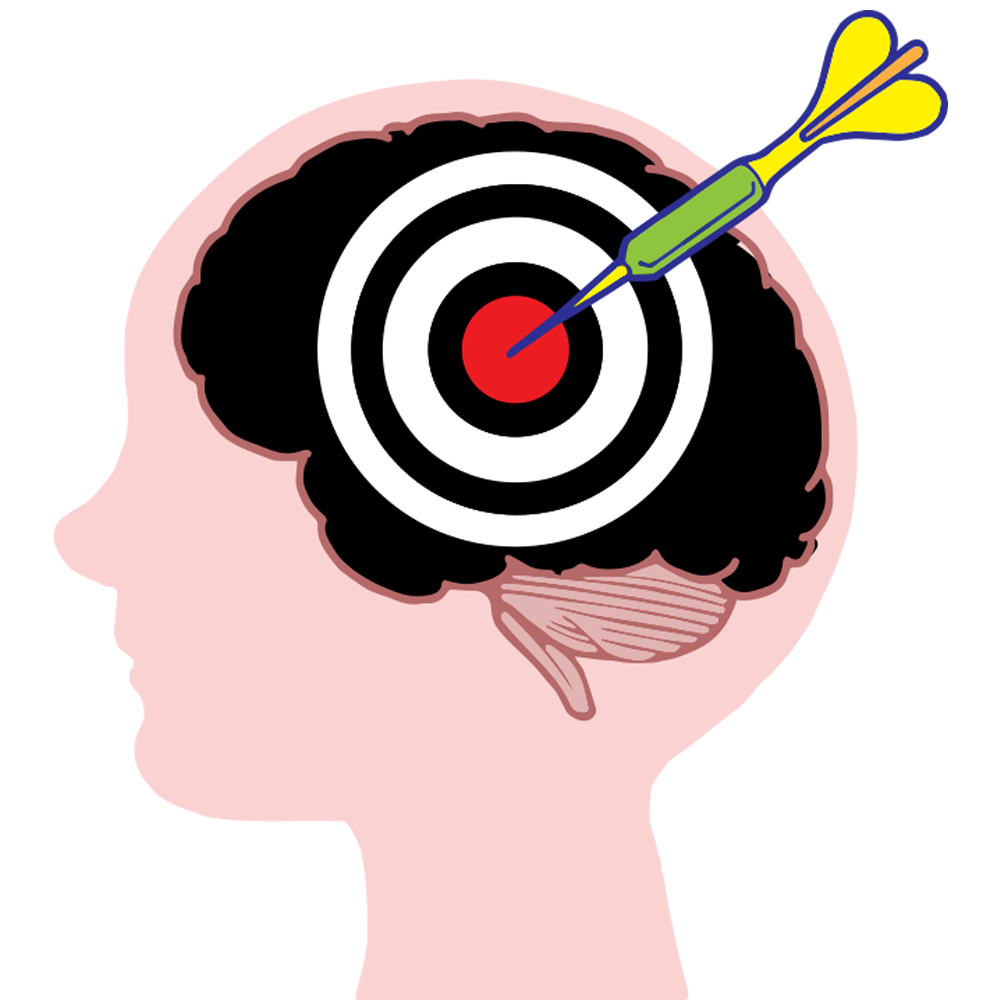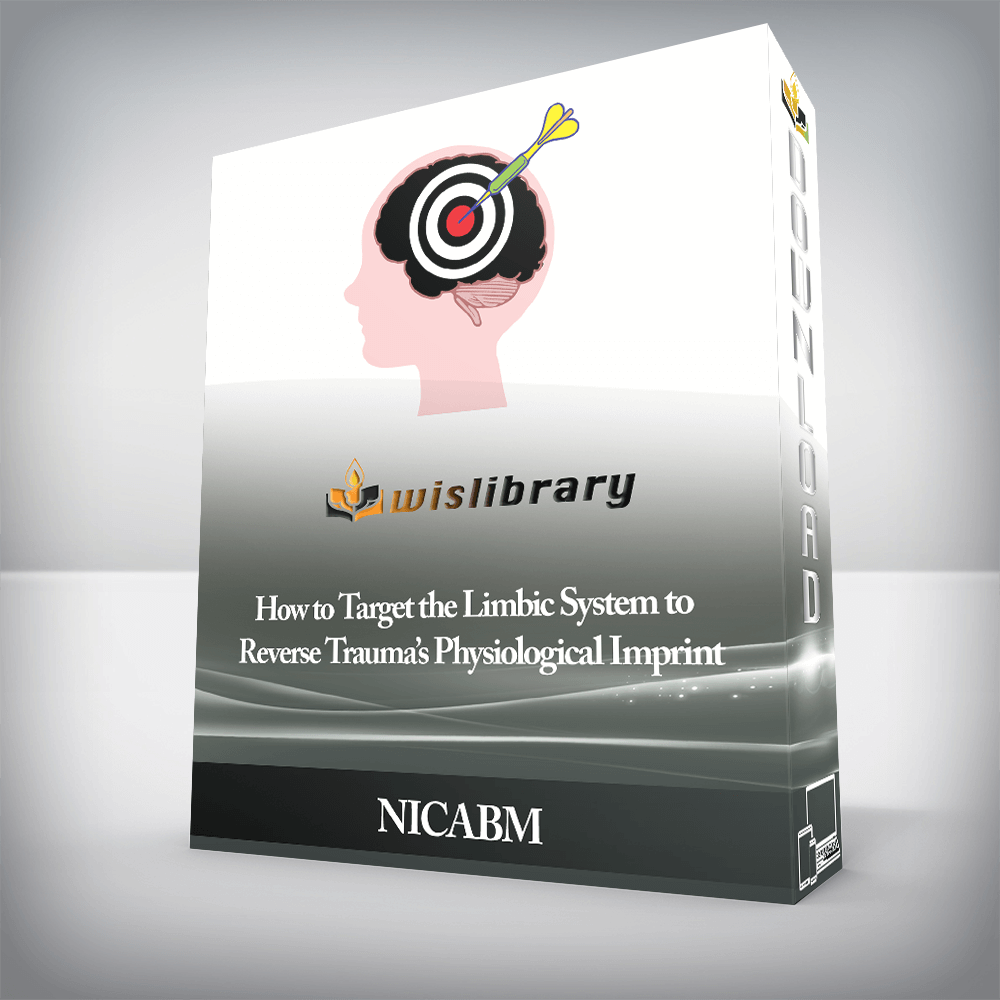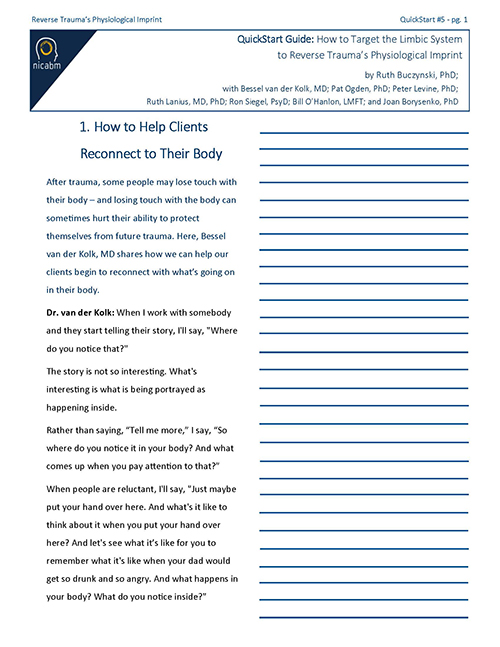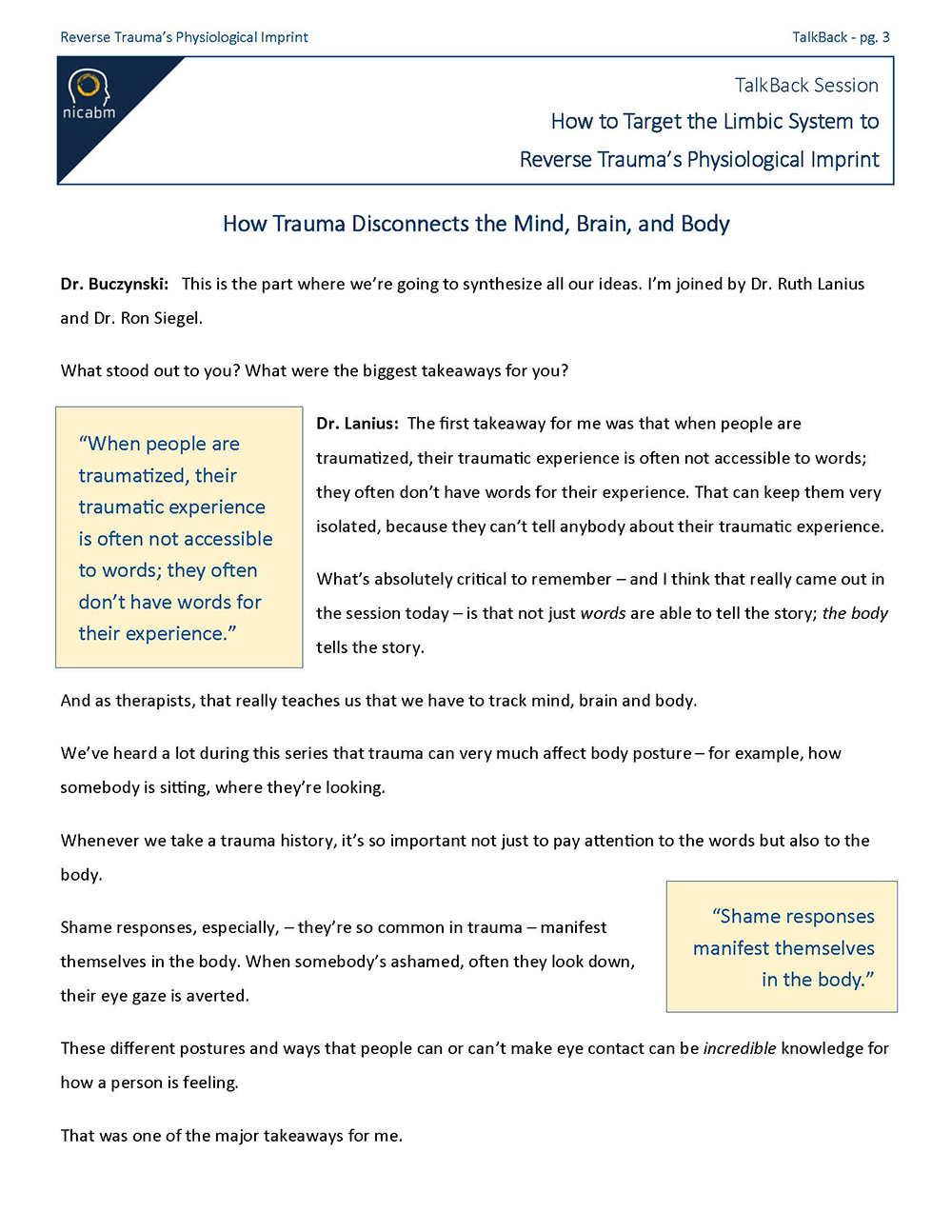NICABM – How to Target the Limbic System to Reverse Trauma’s Physiological Imprint

Once someone has experienced trauma, they’re often on guard, almost perpetually afraid that it will happen again. And here’s the thing . . .
. . . it’s not only the brain that learns this lesson. The body and nervous system do, too.
So to help patients change the way their body reacts after trauma, we need interventions designed to override the lessons the body and nervous system learned during trauma.
That’s why we created a course with four of the world’s top experts – they’ll share their most practical, effective strategies for helping patients resolve trauma that’s held in the brain and body.
How to Target the Limbic System to Reverse Trauma’s Physiological Imprint
What’s Happening in the Body During Trauma
Pat Ogden, PhD Bessel van der Kolk, MD
- How to Help Clients Begin to Notice What’s Going On In Their Body
- One Common Coping Mechanism for Childhood Trauma
- How to Help Traumatized Clients Become More Comfortable Focusing Inward
- Working with the Story the Client’s Body Is Telling
Working with a Client’s Trauma Story
Bessel van der Kolk, MD Pat Ogden, PhD Peter Levine, PhD
- How to Tell When Talk Therapy Could Be Keeping Your Client Stuck in Trauma
- What to Do When a Client’s Somatic Narrative and Verbal Narrative Don’t Match Up
- How to Read a Client’s Trauma Story Through Their Posture
Getting a Reading on a Traumatized Nervous System
Pat Ogden, PhD
- Four Ways to Track How Trauma Is Impacting a Client’s Nervous System
- Working with a Client Who Is Prone to Self-Harm – A Case Study
How to Use Movement to Help a Client’s Body “Unlearn” Its Adaptation to Trauma
Bessel van der Kolk, MD Pat Ogden, PhD
- What to Look for in a Traumatized Client’s “Movement Vocabulary”
- Why Movement Is Critical for Clients Healing from Trauma
- Specific Types of Movement That Can Be Most Useful for Clients Who’ve Experienced Trauma
How to Target the Limbic System to Reverse Trauma’s Impact on the Body
Bessel van der Kolk, MD Ruth Lanius, MD, PhD
- Strategies to Change the Way a Person with a Trauma History Is Wired to Respond
- How to Reconnect the Upper and Lower Parts of the Brain After Trauma
- Limbic System Therapy in Clinical Practice – A Case Study
Critical Insights into Working with Trauma Through the Limbic System
Ruth Lanius, MD, PhD Ron Siegel, PsyD Ruth Buczynski, PhD
- One Element That’s Critical for Healing in the Treatment of Trauma
- Why Catharsis Usually Isn’t Helpful for Resolving and Integrating Feelings After Trauma
- Two Key Strategies to Help Clients Override Their Body’s Response to Trauma
Strategic Practices to Target the Limbic System in the Treatment of Trauma
Joan Borysenko, PhD Bill O’Hanlon, LMFT Ruth Buczynski, PhD
- How to Activate the Thinking Brain While Working with the Body
- One Way to Break the Repetitive Loop of Trauma
- Two Techniques to Help Clients Release Tension in the Body After Trauma
Here’s What You’ll Get:
Everything is yours to keep forever in your professional library
 |
Downloadable videos so you can watch at your convenience, on any device |
 |
Audio recordings you can download and listen to at home, in the car, at the gym or wherever you like |
 |
TalkBack Segments to distill key ideas (this is where we “land” the session) |
 |
Next Week in Your Practice sessions to give you concrete strategies to use with patients |
 |
Professionally-formatted transcripts of the sessions, to make review and action simple |
 |
Three downloadable bonus videos to help you work more effectively with trauma |
Plus, You’ll Get Practical Tools to Help You Take Action Immediately and Effectively
Synthesize Key Concepts So You Can Use Them Immediately
In the TalkBack Session, Ron Siegel, PsyD and Ruth Lanius, MD, PhD join me to dig more deeply into the key ideas. Our job is to make yours easier by streamlining the information and making sure each point is crystal clear. We’ll clarify critical concepts and break it all down so you can gain confidence in your understanding.
Discover Concrete Practices That Will Work in Your Life (and with Your Patients)
Then, with “next week” in mind, we’ll turn smart ideas into easy-to-use applications for your work. In Next Week in Your Practice, Joan Borysenko, PhD and Bill O’Hanlon, LMFT join me to give you specific practices and exercises based on each session. You’ll get strategies you can use with your clients right away.
Uncover Core Ideas and Techniques at-a-Glance So You Have a “Cheat Sheet” When You Need It Most
The QuickStart Guide will help you stay fresh and confident as you turn these teachings into action. We’ve gathered all the essential tools and methods from the program into a concise, easy-to-use guide so you can quickly review and apply these ideas when you need them most. It’s an at-a-glance reference to the most powerful concepts and strategies for working with patients who have experienced trauma.
Quickly Recall Crucial Details So You Can Apply Them with Confidence
Our Professional Transcript will help you reinforce key ideas so you can integrate them into your life and work. We’ve designed your transcript with an easy-to-use table of contents, clear, organized formatting, and helpful highlight quotes so you’ll have the information and exercises you need at your fingertips.













You must be <a href="https://wislibrary.net/my-account/">logged in</a> to post a review.